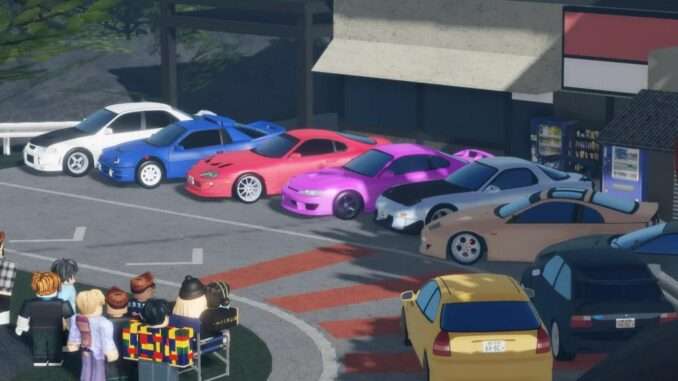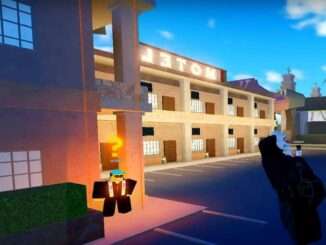
Guide to RWD Keyboard Drift Tuning
Ву microsoftnoob.
This is a guide on how to tune almost any RWD or RWD biased AWD car in Midnight Racing: Tokyo for full angle keyboard drifting.
Intro
This is a guide for tuning cars for maximum performance drifting, your car WILL NOT be easy to use and will take getting used to. All good things require building skills.
Drifting is all about throwing the weight of the car around to upset the balance of the car and then keeping it unbalanced in a sustainable and controlled manner. When we drift tune, we are tuning to make this shifting of weight more dramatic and faster. This allows you to be far more dynamic, giving you the most line options.
Picking a Car
TLDR: Get something light and high power with no downforce and a short wheelbase.
Lighter and more powerful cars are always better. Engine placement affects how the weight of the car swings around and balances. Front engine cars are the most forgiving. Mid engine cars (my personal favourite) will throw their weight around more willingly but do require more care to balance. Rear engine cars are ideal for performance but require a lot more skill to balance, I highly recommend you do not start with one.
Wheelbase matters a lot more than you’d think. Cars with shorter, wider wheelbases transition faster but are less forgiving and more difficult to learn.
As grip increases so does drift speed, so if you want faster, shallower drifts, get a grippier car, but if you want deeper drifts, get something with less.
On the topic of AWD, if the bias is anything more split than 20/80, you’ll probably have a rough time drifting. AWD cars handle differently in that they have more linear transitions between corners (for a description of this, see the description of hang up in camber).
| Picking a Car Attribute Pros and Cons | |
| More HP | Improves every aspect of a drift. |
| Less weight | Improves every aspect of a drift. |
| Downforce | Makes drifting far less smooth, high downforce makes drifting at moderate speeds almost impossible, do not recommend |
| Long wheelbase | Makes rotating the car harder, leads to shallower drifts with slower direction changes. This can be offset by widebodies |
| Mid/rear engined (MR/RR) | Kicks out more easily, more momentum when changing direction, requires more skill to stop it from spinning out but is generally more rewarding |
| Low grip tires | Slower, more manageable drifts. Better for beginners or more relaxed drifting |
How to Tune
I’d recommend doing it in this order:
Engine Upgrades
- More power gives you better angle, max everything.
Aspiration
- The Sequential turbo is objectively the best for drifting, but if you find you feather the throttle a lot, the single turbo might serve you better (although it would be better to just unlearn this habit).
Steering
TLDR: 14:1, 37%, balance the car by tuning the aggro.
- Giving your car max steering angle and softer aggro allows it to counter steer at aggressive drift angles.
Notice how I barely use any steering inputs yet the drift angle doesn’t change? That’s perfect aggro balance.

- You’ll want to leave the angle at max, no real reason to lower it. Aggro on the other hand is important to tweak. The aggressiveness basically dictates how the car countersteers. This affects how the car “balances” mid-drift without your steering input, generally you want it to be neutral (or mildly too aggressive if you can’t achieve neutral). If it’s not countersteering enough (i.e. the nose wants to turn in), turn the aggro down. If it’s countersteering too much (i.e. the nose wants to turn out), turn the aggro up.
I recommend setting aggro to 37% and coming back to fine tune it after you’ve done the other steps.
Suspension
TLDR: Front: 3.8k, 50, Rear: 15k, 500
- As much stiffness and dampening as possible in the rear, as little as possible in the front without bottoming out under braking. You may find the front bounces a bit, this is fine. If it bothers you, bump up the dampening but do note that it will perform worse. I find 3.8k for the front is good for most cars but each car is different, some may require as much as 5k, some can get away with 2k.
- To test this, see how the car rocks forwards under braking. If it bottoms out, you need to make the front suspension stiffer. When it bottoms out, it will give you sudden understeer, we want to avoid this.
- The reason for building your suspension like this is all to do with how the car levers against its axles. Basically when the rear is stiffer, it rocks back under acceleration, pulling the front up and pushing the weight back and up. This makes the rear lighter, giving it more oversteer which makes drifts far smoother.
Weight Reduction
- Less weight is better. WR3 all day, everyday.
Camber
TLDR: Stop being lazy, read this next section
- This is why you do all that other stuff first. Understanding fitment is critical in making a good drift build.
- Having lots of front camber does multiple things. It affects the “hang-up” when changing direction, allows you to have a much wider offset in the front and increases your fine control at high drift angles.
- Firstly, do just a small amount on the rear, generally two degrees.
- Front camber is a bit more complex, I recommend that you tune it so that when at full lock, the inside tire is about 1 degree negative from being fully flat to the road.
Notice how the tire is nearly flat with the road while at full lock but is heavily cambered when not. (Old photo, the front fitment is bad, see the fitment section for better examples).


- For most cars, this is perfect but if you want to change it, just lower or raise it from here. To get the minimum amount of hang up, half the camber value from the recommended tuning method (e.g. if the wheel is flat to the road at full lock with -9 of camber, do -4.5).
- This does two things: it means that on any given corner, the front inside wheel has the least resistance out of all of the tires. This creates a pivot point for the inside rear tire, the tire with the second least resistance, to push in to. This gives you much smoother control while drifting. It also gives you the ideal “hang up”.
- When changing direction on a well tuned car, you’ll notice it’ll tend to turn slower in the middle of a transition and whip in the other direction, this is the hang up. Having the right amount of hang up can affect how smoothly the car will change direction and transition. Having no hang up will result in less predictable transitions, making your drifts less smooth and less stable at high angle, but having too much can cause you to gain too much momentum and spin out before you can slow the rotation.
Diagram of The Tires:

1 = most grip, 4 = least, red shows the direction of power.
2 pushes power through 1 and 1 redirects it as it has the least resistance during the drift while 4 barely redirects the power of 3 as the camber means it has a lot of resistance.
- To fine tune this, you’ll want to have a very good understanding of drifting and the car, this is a very subtle change that can be hard to feel.
Widebody
- If the car has an option for a widebody, we might want one.
- The goal for fitment is to have as much front offset as possible with as little rear offset as possible. Having a bigger difference in offset is MORE important than having a wider offset overall.
- This is very dependent on fitment so i recommend you set the front offset to max and fit the bodykit that best suits that front fitment. You want the bodykit that is the widest at the front and skinniest at the back.
- The greater the difference between the front and rear track width of the car, the easier it’ll be to rotate, letting you get into and adjust the drift with less resistance. This matters a lot more than you may think.
Fitment
TLDR: As wide as possible in the front, prioritise offset over lowering
- Fitment is important in determining how easily a car swings from side to side and how easy it is to adjust your drift angle. Cars with good fitment feel more nimble.
- The goals for fitment are to get as much front offset as possible, as little rear offset as possible (while still looking good ofc) and to lower the car as much as possible with the rear slightly lower than the front (a rear rake).
Spend a lot of time on perfecting your fitment, it looks good, shows off how good you are at tuning, and has performance benefits.


- To get it perfect, you wanna offset it till only the flat part of the tire is still in the wheel well and lower it until there is just barely a gap between the wheel and the wheel well.
- There’s no easy way to tune this other than repeatedly adjusting, respawning the car and visually inspecting it.
- In terms of performance, this can drastically improve the feel of your tunes, making them far easier to adjust during a drift and far easier to catch in transitions.
Brakes
- Not really important if you’re drifting right, leave it stock if you don’t want the cost.
- If you want it tho, level 3 with a rear bias if you already have it unlocked.
- Your choice if you want ABS or not but i tend to prefer using it since I use the handbrake for sliding.
Gearing
TLDR: Set final ratio to 4.5, see what gear it drifts best in, make that the gear ratio for gear 3, set gear 2 as 0.3 more and gear 4 as 0.2 less
- This part is very MUCH to preference, car and track. Gearing basically dictates how deep you can drift on a corner of a certain radius. A good way to set up your gearing is to use the lake Itani circuit as a baseline. You’ll want to be able to drift steadily around most of the corners of Itani in 3rd gear, use 2nd for the tighter ones, using 1st for the food cart corner and 3rd or 4th for pulling out of the last third of corners into drifting down long straights.
- To tune this, go to Otsuki and go to the first corner out of the town. You’ll want to tune your car so you can take this long sweeping corner in 4th, the corner after in 3rd, and the corner after that in 2nd. Use these corners to get a good baseline tune.

- You’ll want to gear your car very short, you aren’t gonna be using more than 4 gears (usually) and you aren’t going over 180 km/h while drifting so you don’t need the range.
- If you find you have to drift too shallow or power out often with a certain gear, shorten it, if you find the drift is too deep, extend it. A good gearing setup will work fine across multiple tracks but it’s not a terrible idea to set up multiple builds with different gear profiles depending on which tracks you like to drift.
Testing Your Tune
I HIGHLY recommend using the Lake Itani loop for tuning and testing. It’s flat, has clearly defined apex’s, has enough variety in the lead outs from corners that it’ll test your direction switching, has a long corner in there for testing faster, shallower drifts and the tuner is about 10 seconds away from the entrance to the loop.
Remember that a good build won’t make you a god at drifting, although it can help a LOT, practice makes perfect. Don’t stress if your first tune isn’t fantastic, once you’re well versed and have made a couple of builds, you’ll have a greater understanding of what you need to do to fine tune your cars. This is where an alright build turns into a fantastic one.
Wow this tune is terrible!
Make sure you aren’t overstepping what the car is capable of, not every car can achieve deep drifts, a Hiace will never drift as well as an AE86 for instance.
Check your steering, if it’s too aggressive you’ll struggle to make smooth drifts. Consequently, if it’s too soft, it’ll feel even worse. If your tune feels flat out terrible in a way you can’t describe, this’ll be it. Set the aggro to 40% and adjust it down a percent at a time until it starts feeling bad, then adjust it back up by one.
Check your camber (especially the rear), make sure it’s around -2.
Check your gearing, if it’s too long you’ll run out of power, if it’s too short, you won’t have enough power.
Now go make a cool drift car and wow your friends, enemies and strangers with your new found skills (or make a shitty tiktok phonk drifting edit idc
Terminology
Drifting:
- A sustainable slide where your rear wheels are spinning in order to power you through
Drift depth:
- How much angle you have compared to the corner. The deeper it is, the more impressive it is and the better it feels. Going too deep is generally how you spin out or stall out of a drift.
Pull:
- When drifting, you can use the throttle to pull yourself away from the centre of the corner. This is because you add horizontal speed relative to the way the car is facing.





Be the first to comment